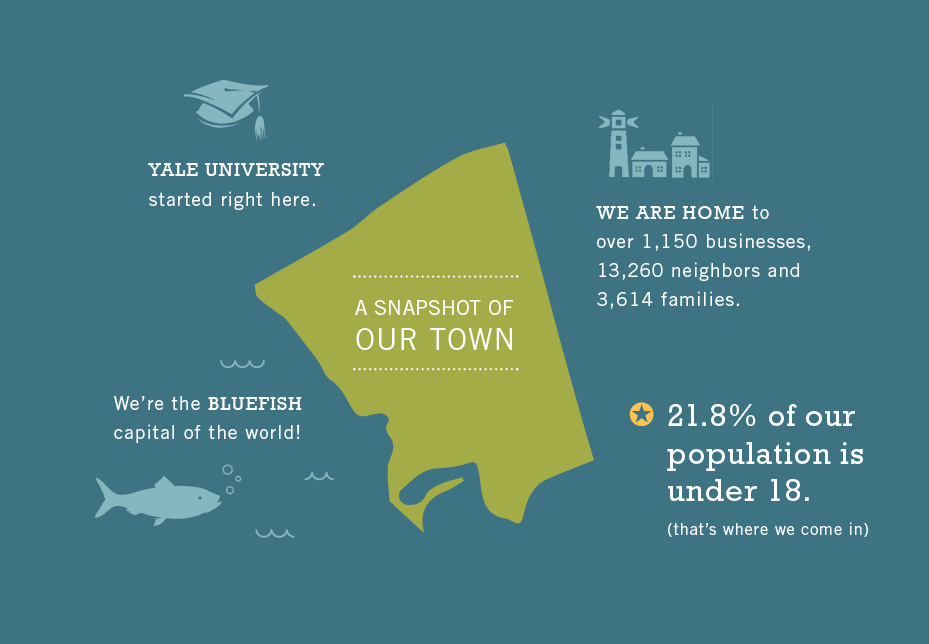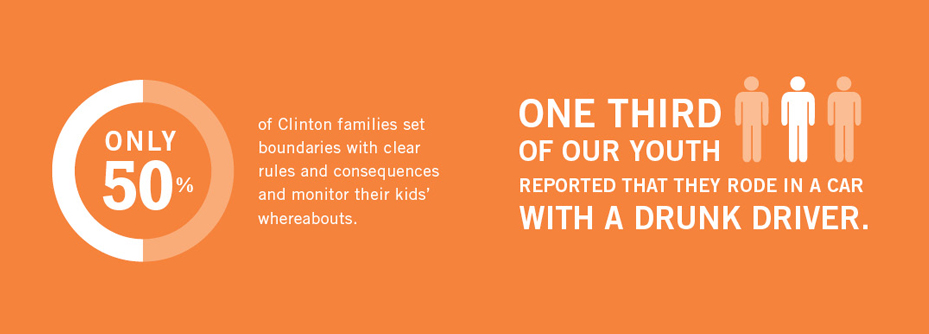Hi there, nice to see you! Hope you enjoyed reading our guide and are ready to take the next steps for a healthier Clinton.
Here are the answers you’re looking for:
 Take a guess at how many folks live in Clinton during the summer.
Take a guess at how many folks live in Clinton during the summer.
It is estimated that the Clinton population rises from 13,000 to 20,000 during the summer months.
 What do you think is the number one reason for these facts?
What do you think is the number one reason for these facts?
Only 50% of Clinton families set boundaries with clear rules and consequences and monitor their kids’ whereabouts.
Only 43% of 7-12 graders reported that they felt that their family had good communication and would be willing to seek their parents’ advice. PiC encourages all families to increase their conversations about ALL topics, not just the “hard” ones! Starting young is so important. Parents can talk with their children regularly about what they think about situations, how they would solve this problem or that. They can watch TV together and discuss what they are watching. As children grow, keeping these lines of communication open is so important! Waiting until a child is a teenager to start discussing drugs and alcohol is too late! Clinton teens also share that with busy lives, boundaries and consequences are often neglected. Parents are working hard and children have a lot that they are involved with. Keep in mind that having predictable outcomes to breaking clearly established rules can actually make things easier on a family.
One third of our youth reported that they rode in a car with a drunk driver.
One of the things that is most frightening about this statistic is that the drunk driver is not necessarily a young peer. Students tell us that they have ridden with an older family member who has been drinking, or the parent of a child they were babysitting! Young people say that it is so uncomfortable to confront an adult who has been drinking about their choice to drive, so they climb into the car and hope for the best. This is terrifying. Talk with your children about a plan for these types of circumstances right away! You may have a plan already set for if their peer is driving intoxicated, but what about another adult?
 How many assets do you think our youth have?
How many assets do you think our youth have?
PiC surveyed all 7-12 graders in Clinton in 2012. Here are the results on total number assets that our youth feel they have:
- 7th graders average 25 assets out of 40
- 8th graders report 23 assets out of 40
- 9th graders report 22 out of 40
- 10th graders 19 assets out of 40
- 11th graders 17 assets out of 40
- 12th graders 18 assets out of 40
13% of all 7-12 graders feel that they only have 1-10 assets!
And only 17% believe that they have 31-40.
What can you do to improve these numbers?
Search Institute studies have found regardless of town size or geography that youth typically lack support. Communities can draw upon the inherent strengths of youth and adults to increase assets in young people and do the following:
• Give adequate adult support through long-term, positive intergenerational relationships
• Provide meaningful leadership and community involvement opportunities
• Engage young people in youth-serving programs
• Provide consistent and well-defined behavioral boundaries
• Help youth connect to their community
• Create critical opportunities to develop social competencies and form positive values
Young people may face complex social forces, including:
• High levels of parental absence
• Adult silence on positive values and healthy boundaries
• Fragmented family and community social systems
• Neighbors who are isolated from one another and separated by age barriers
• Adult fear of becoming involved and the sense that young people are someone else’s responsibility
• Public disengagement from the important work of building meaningful connections with youth
• Youth overexposure to media saturated with violence and sexual situations
• Poverty and lack of access to supportive programs and services
• Inadequate education and poor economic opportunities that cause families to be unable to provide for their children’s needs
• Schools, religious institutions, and other youth-serving organizations that are not adequately equipped to be supportive, caring, and challenging in a positive way
By working to eliminate these barriers and conditions, communities can fortify young people against the allure of risk-taking behaviors, negative pressures, and undesirable sources of belonging in order to prepare them to become the next generation of parents, workers, leaders, and citizens. While this combination of social factors suggests that we have much work to do, a concerted effort by all members of the community to build assets in youth can strengthen our capacity to be caring, connected and committed to the common good.
